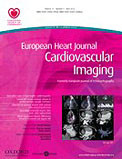Zemánek D, Tomasov P, Homolová S, Linhartová K, Veselka J. Eur J Echocardiogr. 2011 Sep;12(9):684–7. Epub 2011 Aug 4. IF: 2.117

Department of Cardiology
Abstract
AIMS: Hypertrophic cardiomyopathy (HCM) is predominantly associated with left ventricular outflow tract (LVOT) obstruction. The assessment of theobstruction with a provoking test should be a routine part of HCM evaluation. The aim of the study was to determine the utility of a sublingual spray application of isosorbide dinitrate (ISDN) for detection of an obstruction. METHODS AND RESULTS: We have prospectively analysed 77 consecutive HCM patients, measuring the LVOT gradient at rest, using thesublingual spray application of ISDN (2.5 mg; after 2, 5, and 10 min), and with exercise echocardiography. An obstruction was defined as a gradient ≥ 30 mmHg. An obstruction was present in 15 patients (19%) at rest, in 42 patients (55%) after ISDN, and in 55 patients (71%) after exercise. The ISDN test had a sensitivity of 76% and the specificity of 100% relative to exercise echocardiography, while at-rest measurements had a sensitivity of 27% and a specificity of 100%. The chronological difference in the prevalence of obstructions during the ISDN test was statistically significant (P < 0.05); at ISDN plus 2 min, obstructions were seen in only 29 patients (38%, gradient 28.8 ± 25.0 mmHg), however, at ISDN plus 5 and 10 min, obstructions were found in 42 patients (55%, gradient 44.5 ± 39.6 mmHg). CONCLUSION: The ISDN test is a reliable screening method for the detection of an HCM obstruction, however, the measurement should be delayed 5–10 min after the application of ISDN. Patients with negative ISDN tests should undergo exercise echocardiography.
-mk-
